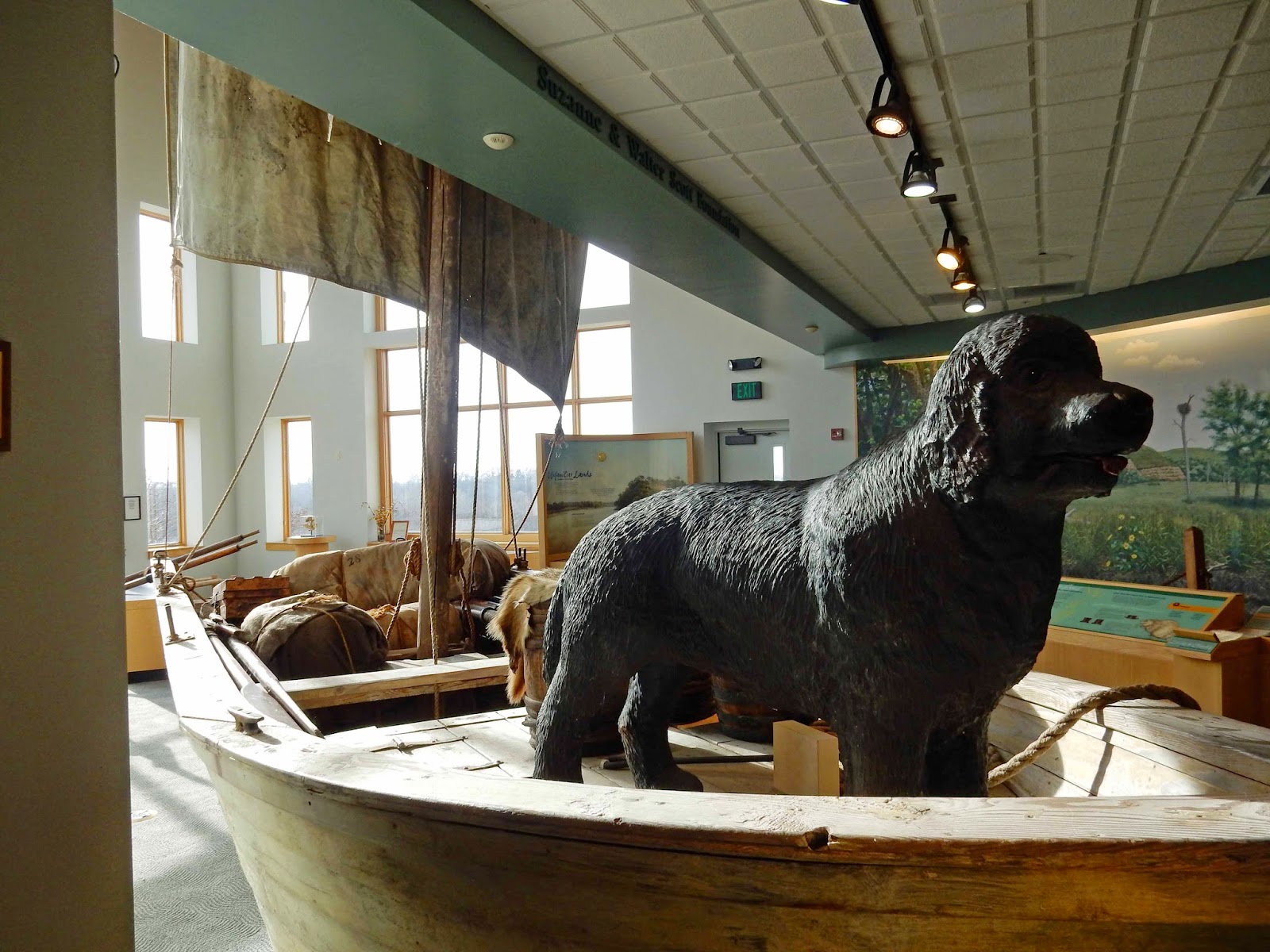Nebraska City is one of the oldest cities in Nebraska, beginning its life with boat traffic along the Missouri River. A bit of internet research reveals too that Nebraska City was a favorite location for covered wagon caravans to cross the Missouri since the shoreline was an easy one for both the horses and the wagons. Today Nebraska City has a population of about 8,000 persons. Its most famous attachment today is as the place where Arbor Day started and is still highly featured everywhere about town.
We arrived about the time for an early lunch, so went first to the Lied Center Conference facility there.
One walks into a huge lobby area. Note the construction featuring large logs.
Above is a better view of the banner that hangs over the fireplace. It advocates the planting of tree using many languages.
We enjoyed a lovely lunch, noticing the table decorations all featured products from trees such as pine cones, acorns and other nuts, or plant life such beans and popcorn. The lamp shades in this room all had leaves imprinted on them.
Outdoors here as well as elsewhere in the city we found tree sculptures.
Above is one of these sculptures, with photos taken from two different perspectives. This particular sculpture is called The Nourishing Tree and is the work of Michele Angle-Farrar.
From our luncheon location we drove to the Kregel Windmill Museum. According to the guide we engaged here this is the only intact windmill shop in the United States. It is housed in the second building used by this company, the original having been located across the street when the company started in 1879. The present building opened in 1903 and was used until 1991 when the company ceased active operations.
The windmills produced here were called ELI and we learned that Kregel named this model after a friend. Windmills were needed in this area of Nebraska because it is a somewhat arid climate. If a farm or ranch was to have water, it was necessary to have a well and wind power was used to pump water from the well. The guide explained that most of the windmills produced here were used within a 30 mile radius of the shop; an interesting outlier to this rule was a windmill shipped in parts by parcel post to an address in Wyoming.
Below are two views of windmill construction equipment. While the present building appears to be crowded with equipment, our guide explained that during the time windmill construction was underway there was even more equipment about.The factory museum is set up to show how the factory looked in 1939.
I remembered pumps like this below from time I was growing up on a farm in Iowa.
I found these jars and didn't quite know what it was.
Perhaps it can be seen that each carries a label. The guide explained to me that the typical well was a sand point well. Each jar shows the type of sand associated with each well. Having this sample would tell the windmill staff what tools might be needed if they needed to repair the well.
Above is how the office may have looked in 1939, complete with a note on the desk advising the manager not to forget his dental appointment that day.
I didn't know what I was getting into when we stopped here, but I surely enjoyed this tour.
From here we drove about three miles to the Missouri Basin Lewis and Clark Interpretative Museum. This museum particularly centers on natural history associated with the Lewis and Clark expedition.
Inside we first saw a pirougue.
I ducked into the nearby gift shop. All the books related somehow to the Lewis and Clark expedition, but the below made me laugh.
We learned that during the entire two-year trip the expedition members were plagued by mosquitoes. Perhaps they thought the mosquito loomed as large as the model below.
On the lower level I learned that the expedition used 25 boats! Below are models of two of the boats.
These models are the work of Butch Bovier from L& C Replicas located in Onawa, Iowa.
The top level of the museum features a diorama of showing the prairie through which the expedition traveled.
Nearby was an exhibit about the interaction of the expedition members with the grizzly bears. This exhibit featured something quite unique.
It is a necklace made from grizzly bears claws. The story shown with the display is that necklace was given by an Indian to the expedition members. Upon their return they gave it to President Jefferson who gave it to the museum in Philadelphia. From there it went missing for more than 100 years. No mention of where it was found, but it did find its way to this museum.
Another exhibit explained how the expedition became dependent on fish as a food source as they continued west. This exhibit shows notes from the expedition members' journals as they attempted to explain how all these species of fish -- new to them -- were the same and different from fish they had known elsewhere.
One room on this level of the museum is devoted to stamps associated with the Lewis and Clark expedition. Below is a first day cancellation. Note the date on this cancellation is 1994.
Below is a stamp from 1904. This was issued during the 100th anniversary of the expedition.
I can't imagine in 1904 what a 10 cent was used for; my first memory of postage about 50 years later is that one could send a letter for 3 cents and post card cost 1 cent!
We learned that Lewis and Clark re-enactments take place at this museum once a month during the summer months. If you are interested in Lewis and Clark, you will want to put this museum on your list of things to do.
This was a very pleasant day in Nebraska City.



















































